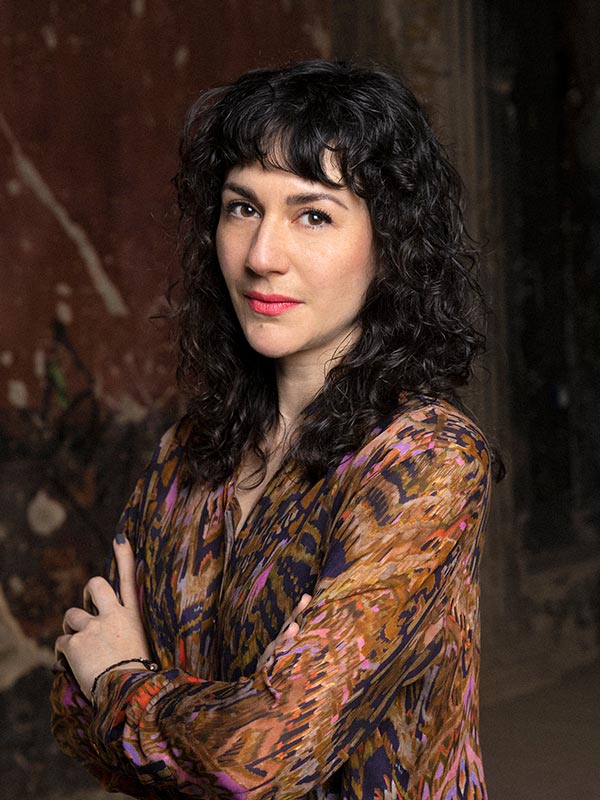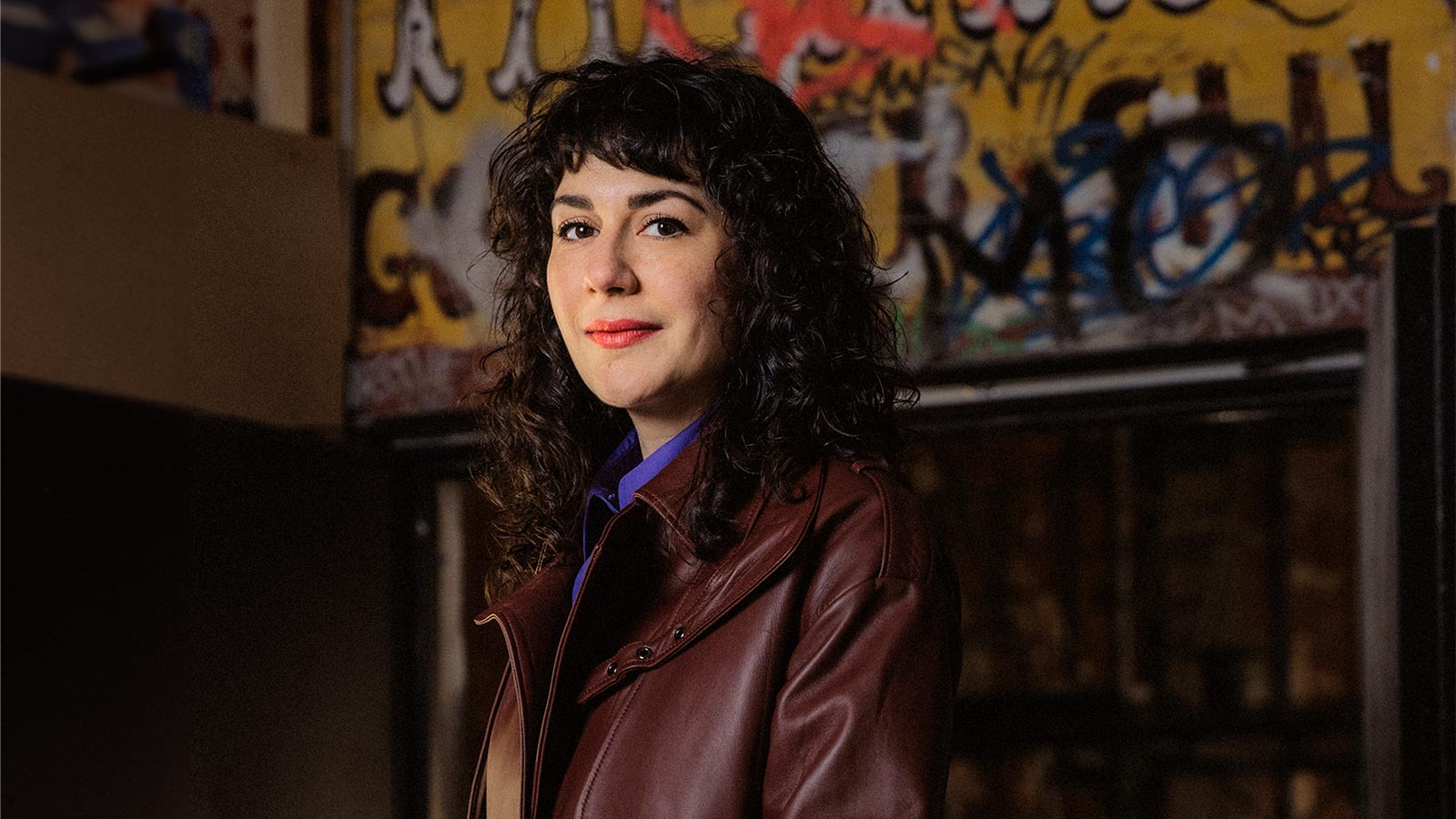Art has many faces. As Director of Exhibitions, Marina Paulenka decides which works are exhibited at Fotografiska Berlin – and thus redefines art every day. What does it take to survive in this scene and why does AI not necessarily mean the downfall of creativity? Well, just read on.
FACES: You are Director of Exhibitions at Fotografiska Berlin, a museum dedicated entirely to art. How should we imagine your everyday life?
Marina Paulenka: As exhibition director, I am responsible for the entire exhibition strategy as well as the artistic direction of Fotografiska. I have the pleasure of curating the exhibitions of local and international artists and working with my great colleagues locally and internationally as a member of the exhibition committee. I see Fotografiska as an important place for photography and contemporary culture that offers artists a platform to express themselves. We show the work of established as well as emerging artists, and it is particularly important to us to show work from very different stages of their careers – from students to recognized professionals.
FACES: What is the most important skill you need for your job?
Marina Paulenka: The most important skill I need for my role at Fotografiska Berlin is, of course, knowledge of the history of art and contemporary art as well as contemporary photography. As I am also an artist myself, I understand the process on both sides. It is also important to master the art of listening attentively to artists. In this dynamic environment, the foundation of success lies in the ability to truly listen and understand what the artists are sincerely trying to convey, while also understanding the expectations of our audience.
Creative people in the art industry
FACES: What is it like to work in the art industry?
Marina Paulenka: I find it very inspiring to work with artists, cultural professionals and creative people – it’s never boring, it’s very enriching. Art is crucial for our culture as well as our personal and social growth. I am also in contact with experts from various fields in order to make connections. Being involved in the arts industry is an incredibly inspiring experience. Working with people who are at home in the world of art not only inspires my creativity, but also offers a unique perspective. However, my commitment goes beyond the art sector; I actively cultivate connections to various industries. This multifaceted approach allows me to build bridges between different areas that facilitate the discovery of new ideas, innovative solutions and unprecedented growth opportunities.
FACES: Which clichés about the art industry are true and which are false?
Marina Paulenka: It’s true that people in the art industry are incredibly diverse and open-minded. This diversity is a source of inspiration for me, as it leads to a rich mix of perspectives and creative approaches. People from different backgrounds often come together in the art scene, which creates an environment in which many different voices and views can unfold. The willingness to explore unconventional ideas and challenge the status quo is a hallmark of those working in the arts. One preconception that is not true is that people in this industry are snobs. Of course, as in every industry, there are also elitists, but it would be wrong to lump the entire scene together.
Be fair to people
FACES: What’s the best piece of advice you’ve received during your 15-year career in the art scene, and what’s the most valuable piece of advice you’d like to pass on?
Marina Paulenka: Be nice and fair to people. If you have a vision and work hard at it, stand by your decisions and take risks, absolutely nothing is impossible.
FACES: What’s your favorite thing about your job, and what’s the biggest challenge?
Marina Paulenka: What I like most about my work is the unpredictability that each day brings. The diversity and uniqueness of each day with its special challenges and opportunities is what I particularly like. On the other hand, this unpredictability can also be the biggest challenge. Adapting to the ever-changing environment is invigorating, but it also requires a constant willingness to face the unknown and find innovative solutions.
Good photography is authentic
FACES: You work with many artists. What makes a good photographer?
Marina Paulenka: Good photographers are authentic, honest and use the power of art to bring about positive change.
FACES: How do you recognize a successful photo?
Marina Paulenka: For me, photography, like any other medium, is not about style or aesthetics, but rather about the message, the idea, the concept, the thought, the story and the intention behind it. Topicality and relevance are important to me when I look at photographs. That doesn’t mean that I’m not impressed by a photographer’s brilliant technique and imagery. Both aspects are important.
This is how your photo gets into the Fotografiska Berlin!
FACES: What criteria do you use to select the works that are exhibited at Fotografiska Berlin?
Marina Paulenka: Our criteria are constantly evolving to ensure that we remain dynamic and innovative. We are in constant communication to redefine these criteria and ensure that they are in line with our commitment to freshness and novelty.
FACES: What does an artist have to do to be able to exhibit their work with you?
Marina Paulenka: The key is not to hide your work as an artist, but to present it with unwavering self-confidence. Our innate flair for discovering remarkable creations unfolds naturally over time, so you should let your artistic voice be heard without reservation.
Talent means inspiring those around you
FACES: How do you recognize talent?
Marina Paulenka: Talent shows itself when someone succeeds in inspiring not only myself, but also others around me.
FACES: What kind of art will never be exhibited at Fotografiska Berlin?
Marina Paulenka: At Fotografiska Berlin, we pursue an integrative approach that encompasses a wide range of art forms, including video, performances and various forms of creative expression. Our mission is to build bridges, not to divide. Therefore, we are committed to avoiding any art that undermines our goal of fostering connection and understanding between different audiences.
FACES: What kind of art do you have hanging on your walls at home?
Marina Paulenka: I own the works of artist friends that have accumulated over the years. Every single piece is linked to a memory, I like that.
The love of money
FACES: How is the monetary value of art determined?
Marina Paulenka: That’s a question for the art market. There are many criteria, and I think this is a separate issue. At Fotografiska we do not buy or sell art.
FACES: Can art be learned, both in its appreciation and in its creation?
Marina Paulenka: Definitely. I am convinced that every person has a latent creative and inspirational aspect within them. This innate artistic ability can be encouraged and developed even more through learning and exploration, both in relation to the evaluation of art and the active creation of art.
Art and criticism
FACES: Can art be constructively criticized at all?
Marina Paulenka: Of course, all art is open to constructive criticism, as it serves as a starting point for meaningful conversations. Discussions that address the nuances of artistic expression allow for a deeper understanding and appreciation of the work and encourage a rich exchange of perspectives.
FACES: How do you phrase your rejections to an artist if you’ve decided not to show their work at your venue?
Marina Paulenka: I think the politeness of a rejection lies in the sincerity of the words, professional appreciation and respect for the entire interaction with the person in question. In a professional context, rejection can trigger growth, which is an extremely valuable benefit, even if rejection is never pleasant for us humans. Basically, it’s about putting yourself in the other person’s shoes, taking their perspective and showing empathy accordingly.
These museums are a must-see
FACES: What are the top three must-visit museums, and which can be skipped?
Marina Paulenka: For the sake of simplicity, I’ll limit myself to Berlin: I like to see what’s happening at the C/O Berlin, the Gropius Bau, the Hamburger Bahnhof and the many interesting small, independent art spaces in Neukölln. You wouldn’t find me in the Currywurst Museum, although… maybe that would be fun!
FACES: What are the downsides of digitalization and social media for artists, and what are their opportunities?
Marina Paulenka: Social media in general make one thing very clear to me: visuality is one of the most profound players of our time and a place where the most important questions are asked. Images surround us, we perceive the world through them. We have memories that are based on images. All of this inevitably means that visual culture has to take a lot of criticism. The question is how to contextualize them and create knowledge. An atmosphere of transdisciplinary experimentation across fields and sectors prevails in the arts. What we need, however, is a new cultural competence that enables artists to report and speculate on possible future scenarios – as with any technology.
AI-generated art and the future of photography
FACES: Is AI-generated art to be valued the same as art created without its help?
Marina Paulenka: This is a new area that is developing very quickly and is getting better and better. But does AI also inspire us? Maybe, I’m open to it, because there are people behind it who have to feed the machine or the software with information. But I am sure that this will not make artists and photographers superfluous. Photography as a medium has always been closely interwoven with technological progress. The advent of AI adds a new layer to this dynamic. While AI-generated images can boast remarkable technical capabilities, the emotional and conceptual resonance they evoke is crucial. However, this does not exclude the possibility that AI can also serve artists as a tool that supports their creative process rather than replacing it. AI adds another layer to art, but we have to be very careful with this tool.
FACES: What kind of photography can you never get enough of?
Marina Paulenka: Pictures of cats in my Instagram feed. (laughs)

Marina Paulenka
Marina Paulenka already has 15 years in the art industry under her belt. So the position as Director of Exhibitions at Fotografiska Berlin was a logical consequence. Paulenka has earned her spurs at the UNSEEN Foundation in Amsterdam and as artistic director of the Organ Vida International Photo Festival in Zagreb. This attracts admirers – and prizes, such as the Lucie Award for best curator, which she won for her work in 2018. Since mid-September 2023, Fotografiska Berlin in the German capital has been the new place for art fans and those who not only want to fill a rainy afternoon with culture, but also an entire evening. The museum is open every day until 11 pm.
Fotografiska Berlin – The Contemporary Museum of Photography, Art and Culture Oranienburger Straße 54, Berlin
It’s worth paying a visit to Fotografiska Berlin! You can find all the information you need for your visit here.
Photography moves. You can find even more great works by talented photographers here and here.
Teaser photo & photo: © Fotografiska Berlin









